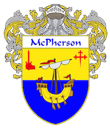Articles
My guess is that many articles have been written about Alick’s research but most are internal to CERN. It would be good to link to these.
Here is an early online article which I record here because it will be deleted at some point in the future.
Books & Articles
You may need to expand this page.
Kiwi With His Finger On Big Bang Button 31 Jan 2009
For 15 years scientists have been building a machine called the Large Hadron Collider to recreate the immediate aftermath of the Big Bang - and now they're going to turn it on. A Kiwi is one of the elite few driving the world's biggest scientific experiment to recreate the immediate aftermath of the Big Bang.
Ashburton-raised Alick Macpherson is one of seven scientists running the Large Hadron Collider on the border of France and Switzerland. About 7pm tonight the switch will be flicked to send beams of protons circulating around the 27 kilometre-long underground ring near Geneva. Dr Macpherson's shifts at Cern - European Centre for Nuclear Research - as engineer-in-charge of the collider fall either side of that, but he will be briefing media. "This is it," he said yesterday. "This machine has been over 15 years in the design and building and now we're turning it on."
The first high-energy collisions - with proton beams smashed into each other to recreate the conditions of a fraction of a second after the Big Bang are due mid to late next month. Dr Macpherson left Canterbury University in 1988, did a doctorate at Canada's University of Alberta in Edmonton and arrived at Cern in 1996. He lives in France, has a French wife and three children. "It's a long way from Ashburton ... If you'd told me then I'd be doing this here now, I would have told you you were crazy." As for the disaster scenarios of the LHC unleashing a black hole to swallow the Earth, he said: "We have been shown to meet all safety standards. In terms of the black-hole scenario, LHC is safe."
What is the Large Hadron Collider (LHC)?
Built and being operated by the European Organisation for Nuclear Research (Cern), the 6 billion euro (NZ$13.8 billion) LHC is in a circular tunnel 27km in circumference and between 50m and 175m underground that lies across the Swiss and French border near Geneva. See graphic.
What does it do?
The LHC smashes protons moving at 99.999999 per cent of the speed of light (299,792,458 m/s) into each other and recreates conditions a fraction of a second after the "Big Bang", which is believed to have formed the universe about 13.61 billion to 13.85 billion years ago.
What is the Big Bang Theory?
The Big Bang is the model of the universe that is best supported by scientific evidence and observation. The theory is that the universe has expanded from a hot and unbelievably dense initial condition and continues to expand.
What is a hadron?
A hadron is a particle held together by strong nuclear force. The best known hadrons are protons and neutrons.
What has New Zealand contributed to the LHC?
The New Zealand Government formalised co-operation with Cern in December 2003. Scientists at Canterbury, Auckland and Massey universities have been involved in building detector components for one of the two big experiments to be carried out on the LHC. About $600,000 has been granted by the Foundation for Research Science and Technology for this work.
Original FairfaxMedia article: www.stuff.co.nz/national/620455/Kiwi-with-his-finger-on-Big-Bang-button



